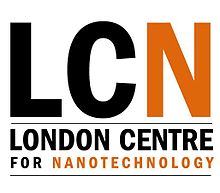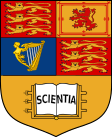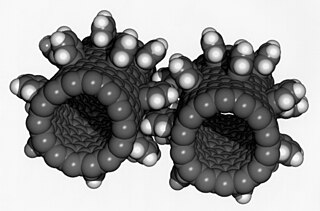
Nanotechnology was defined by the National Nanotechnology Initiative as the manipulation of matter with at least one dimension sized from 1 to 100 nanometers (nm). At this scale, commonly known as the nanoscale, surface area and quantum mechanical effects become important in describing properties of matter. The definition of nanotechnology is inclusive of all types of research and technologies that deal with these special properties. It is therefore common to see the plural form "nanotechnologies" as well as "nanoscale technologies" to refer to the broad range of research and applications whose common trait is size. An earlier description of nanotechnology referred to the particular technological goal of precisely manipulating atoms and molecules for fabrication of macroscale products, also now referred to as molecular nanotechnology.
Nanoengineering is the practice of engineering on the nanoscale. It derives its name from the nanometre, a unit of measurement equalling one billionth of a meter.

Nanotechnology education involves a multidisciplinary natural science education with courses such as physics, chemistry, mathematics, and molecular biology. It is being offered by many universities around the world. The first program involving nanotechnology was offered by the University of Toronto's Engineering Science program, where nanotechnology could be taken as an option.
Sir Mark Edward Welland, is a British physicist who is a professor of nanotechnology at the University of Cambridge and head of the Nanoscience Centre. He has been a fellow of St John's College, Cambridge, since 1986 and started his career in nanotechnology at IBM Research, where he was part of the team that developed one of the first scanning tunnelling microscopes. He was served as the Master of St Catharine's College, Cambridge and took up office from 2016 to 2023.

Nanobiotechnology, bionanotechnology, and nanobiology are terms that refer to the intersection of nanotechnology and biology. Given that the subject is one that has only emerged very recently, bionanotechnology and nanobiotechnology serve as blanket terms for various related technologies.

Nanochemistry is an emerging sub-discipline of the chemical and material sciences that deals with the development of new methods for creating nanoscale materials. The term "nanochemistry" was first used by Ozin in 1992 as 'the uses of chemical synthesis to reproducibly afford nanomaterials from the atom "up", contrary to the nanoengineering and nanophysics approach that operates from the bulk "down"'. Nanochemistry focuses on solid-state chemistry that emphasizes synthesis of building blocks that are dependent on size, surface, shape, and defect properties, rather than the actual production of matter. Atomic and molecular properties mainly deal with the degrees of freedom of atoms in the periodic table. However, nanochemistry introduced other degrees of freedom that controls material's behaviors by transformation into solutions. Nanoscale objects exhibit novel material properties, largely as a consequence of their finite small size. Several chemical modifications on nanometer-scaled structures approve size dependent effects.
The history of nanotechnology traces the development of the concepts and experimental work falling under the broad category of nanotechnology. Although nanotechnology is a relatively recent development in scientific research, the development of its central concepts happened over a longer period of time. The emergence of nanotechnology in the 1980s was caused by the convergence of experimental advances such as the invention of the scanning tunneling microscope in 1981 and the discovery of fullerenes in 1985, with the elucidation and popularization of a conceptual framework for the goals of nanotechnology beginning with the 1986 publication of the book Engines of Creation. The field was subject to growing public awareness and controversy in the early 2000s, with prominent debates about both its potential implications as well as the feasibility of the applications envisioned by advocates of molecular nanotechnology, and with governments moving to promote and fund research into nanotechnology. The early 2000s also saw the beginnings of commercial applications of nanotechnology, although these were limited to bulk applications of nanomaterials rather than the transformative applications envisioned by the field.
The impact of nanotechnology extends from its medical, ethical, mental, legal and environmental applications, to fields such as engineering, biology, chemistry, computing, materials science, and communications.

JEOL, Ltd. is a major developer and manufacturer of electron microscopes and other scientific instruments, industrial equipment and medical equipment.
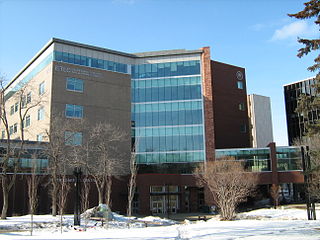
The University of Alberta Faculty of Engineering is one of the largest engineering schools in Canada in terms of size, international impact, and reputation. The faculty is home to 1 Canada Excellence Research Chair, 16 Canada Research Chairs, 13 Natural Sciences and Engineering Research Council chairs, and 5 Foundation Supported Chairs.
The following outline is provided as an overview of and topical guide to nanotechnology:
The College of Nanotechnology, Science, and Engineering is part of the University at Albany, SUNY in Albany, New York. Founded in 2004 at the University at Albany, SUNY, the college underwent rapid expansion in the late-2000s and early-2010s before merging with the SUNY Institute of Technology in 2014. The college rejoined the University at Albany in 2023. The college was the first college in the United States devoted to nanotechnology.
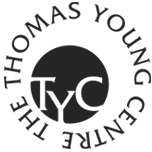
The Thomas Young Centre (TYC) is an alliance of London research groups working on the theory and simulation of materials (TSM). It is named after the celebrated scientist and polymath Thomas Young (1773–1829), who lived and worked in London and is known in the world of science for a number of important discoveries concerning the wave nature of light, the theory of vision, the elastic properties of solids, and the theory of surface tension. The participating research groups are based mainly at Imperial College London, King's College London, Queen Mary University of London (QMUL) and University College London (UCL), but there are also members at the National Physical Laboratory in Teddington. The aims of the TYC are to foster collaboration between TSM research groups in London, to provide a world-class source of graduate education in the field, and to address problems of major importance to industry and society. The current (2009) membership of TYC numbers about 80 research groups, of which six are led by Fellows of the Royal Society.
The UCL Faculty of Engineering Sciences is one of the 11 constituent faculties of University College London (UCL). The Faculty, the UCL Faculty of Mathematical and Physical Sciences and the UCL Faculty of the Built Envirornment together form the UCL School of the Built Environment, Engineering and Mathematical and Physical Sciences.
The UCL Faculty of Mathematical and Physical Sciences is one of the 11 constituent faculties of University College London (UCL). The Faculty, the UCL Faculty of Engineering Sciences and the UCL Faculty of the Built Envirornment together form the UCL School of the Built Environment, Engineering and Mathematical and Physical Sciences.

Gabriel Aeppli, PhD FRS is a Swiss-American electrical engineer, co-founder of the London Centre for Nanotechnology, professor of physics at ETH Zürich and EPF Lausanne, and head of the Synchrotron and Nanotechnology department of the Paul Scherrer Institute, also in Switzerland.

The history of Imperial College London can be traced back to the founding of the Royal College of Chemistry in 1845 in London, with some ancestral medical schools dating back to 1823. The college was formed in 1907 out of the Royal Colleges in South Kensington, and throughout the 20th century became central to the national strategy for technical education and research. It existed for most of its life as part of the University of London, only becoming independent in 2007.

Nguyễn Thị Kim Thanh is a professor of Nanomaterials at University College London. She was awarded the 2019 Royal Society Rosalind Franklin Award for her research and efforts toward gender equality.
This glossary of nanotechnology is a list of definitions of terms and concepts relevant to nanotechnology, its sub-disciplines, and related fields.
